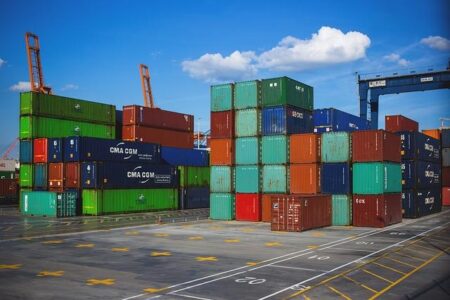Canada and Indonesia are poised to finalize their first-ever North American trade agreement, marking a significant development in the shifting landscape of global economic alliances. The pact, set against a backdrop of evolving geopolitical tensions and supply chain realignments, underscores both nations’ strategic efforts to diversify trade partnerships beyond traditional blocs. As Canada seeks to deepen economic ties within the Asia-Pacific region and Indonesia aims to expand its footprint in the Americas, this landmark deal is expected to reshape trade dynamics and signal a broader trend toward new international cooperation frameworks.
Canada and Indonesia Forge Historic North American Trade Agreement to Strengthen Economic Ties
In a groundbreaking move reflective of the evolving global economic landscape, Canada and Indonesia are poised to finalize their first-ever North American trade agreement. This strategic pact is anticipated to significantly enhance bilateral commerce by reducing tariffs, fostering investment, and boosting cooperation across multiple sectors including technology, natural resources, and sustainable energy. Analysts highlight this as a decisive step for both countries to diversify their trade partnerships amid mounting geopolitical uncertainties and shifting alliances worldwide.
Key benefits outlined in preliminary reports include:
- Enhanced market access: Canadian exporters will gain streamlined entry into Indonesia’s burgeoning consumer base, while Indonesian manufacturers can expand presence in North American markets.
- Innovative cooperation: Joint initiatives in clean energy, digital infrastructure, and supply chain resilience.
- Regulatory alignment: Simplification of customs procedures aimed at reducing bureaucratic delays and compliance costs.
The agreement also emphasizes environmental standards and labor rights, positioning the deal as a model for sustainable trade. Below is a snapshot comparison of trade volumes before and projected after the agreement takes effect:
| Trade Aspect | Current Volume (USD Billion) | Projected Volume (USD Billion) |
|---|---|---|
| Canadian Exports to Indonesia | 2.8 | 4.5 |
| Indonesian Exports to Canada | 3.2 | 5.0 |
| Direct Investment | 1.1 | 2.3 |
Strategic Implications of the Pact Amid Evolving Global Trade Dynamics
The agreement between Canada and Indonesia marks a pivotal shift in the global trade landscape, reflecting a strategic recalibration amid intensifying economic realignments. As traditional alliances face increasing uncertainty, this pact positions both nations to capitalize on complementary strengths-Canada’s advanced technology and resource exports combined with Indonesia’s rapidly growing consumer market and manufacturing capacity. By bypassing some of the more protectionist tendencies seen in larger trade blocs, the deal signals a nuanced approach to fostering regional interdependence with an eye toward resilience in fluctuating geopolitical environments.
The pact further underscores several key strategic benefits:
- Diversification: Reducing reliance on established partners like the U.S. and China by opening up new avenues for trade and investment.
- Market Access: Boosting Canadian exporters’ entry into Southeast Asia’s expanding markets while providing Indonesia enhanced access to North American innovation and capital.
- Supply Chain Resilience: Establishing more agile, geographically distributed networks to withstand global disruptions.
- Geopolitical Signal: Demonstrating commitment to multipolar cooperation in a period marked by escalating trade tensions worldwide.
| Factor | Canada | Indonesia |
|---|---|---|
| Key Export | Natural Resources, Technology | Textiles, Electronics |
| Growth Potential | Access to Southeast Asian Market (270M+ population) | Access to North American Market & Innovation |
| Geopolitical Advantage | Diversifying trade partners beyond US/China | Strengthening ties within emerging trade frameworks |
Policy Recommendations for Maximizing Benefits and Navigating Potential Challenges
To fully leverage the emerging Canada-Indonesia trade pact, policymakers must prioritize streamlined customs procedures and regulatory alignment. Simplifying cross-border logistics will reduce delays and costs, enhancing competitive advantages for businesses from both nations. Additionally, fostering robust public-private partnerships can energize sectors such as clean energy, digital services, and sustainable agriculture-areas with high growth potential under this agreement. Strengthening intellectual property protections and dispute resolution mechanisms will also be pivotal for building investor confidence amid evolving global alliances.
Addressing challenges requires a focus on equitable growth and environmental safeguards. Governments should implement training programs to prepare the workforce for new market demands while safeguarding vulnerable industries through phased tariff reductions. Proactive environmental standards and monitoring will mitigate the risk of accelerated resource exploitation. Consider the following key policy actions:
- Enhance transparency in trade negotiations to secure broad stakeholder buy-in.
- Invest in digital infrastructure to support e-commerce and supply chain integration.
- Establish bilateral working groups for continuous policy evaluation and rapid conflict resolution.
- Support SMEs in tapping into new export markets through targeted subsidies and capacity-building.
| Policy Area | Recommended Action | Expected Outcome |
|---|---|---|
| Customs & Regulations | Implement single-window clearance systems | Faster goods movement |
| Workforce Development | Launch skills retraining programs | Job retention and upskilling |
| Environmental Protection | Set emission benchmarks for exporters | Reduced ecological footprint |
| SME Support | Provide export financing schemes | Expanded market access |
In Conclusion
As Canada and Indonesia move closer to finalizing their first North American trade agreement, the deal underscores shifting dynamics in global trade alliances. With both nations seeking to diversify economic partnerships amid increasing geopolitical uncertainties, this pact marks a strategic step toward strengthening bilateral ties and expanding market access. Observers will be watching closely to see how the agreement influences broader regional cooperation and the evolving landscape of international commerce.




